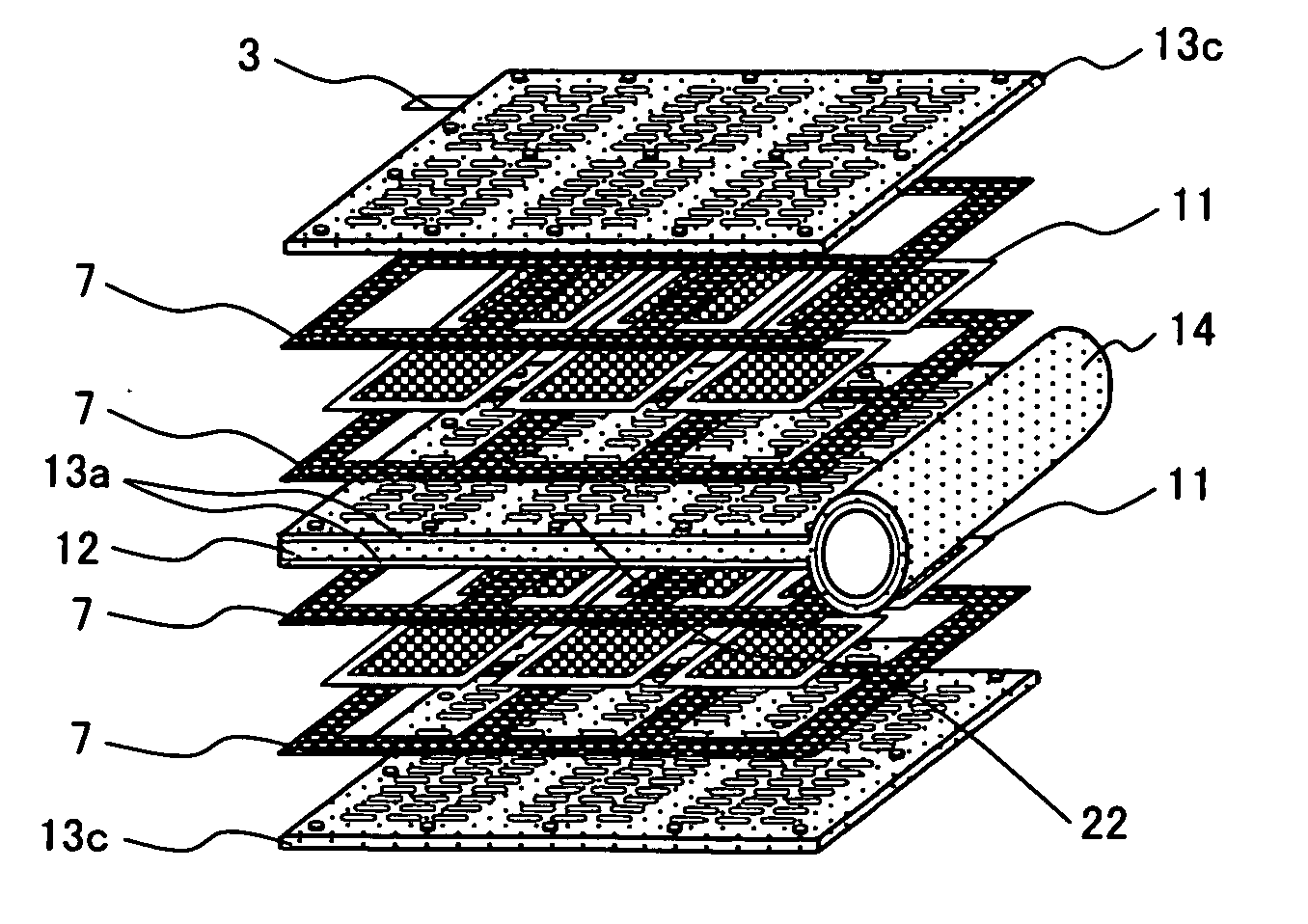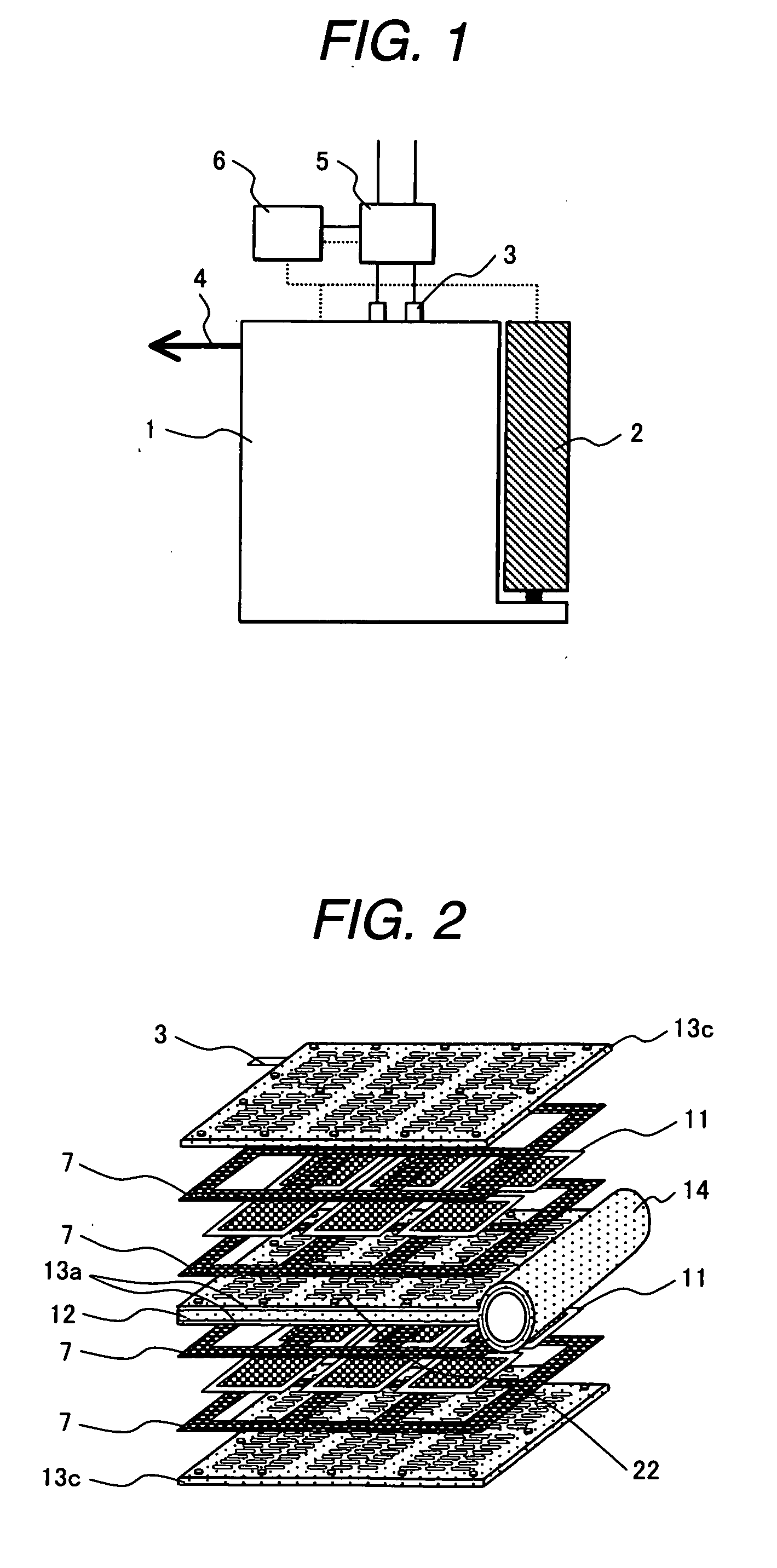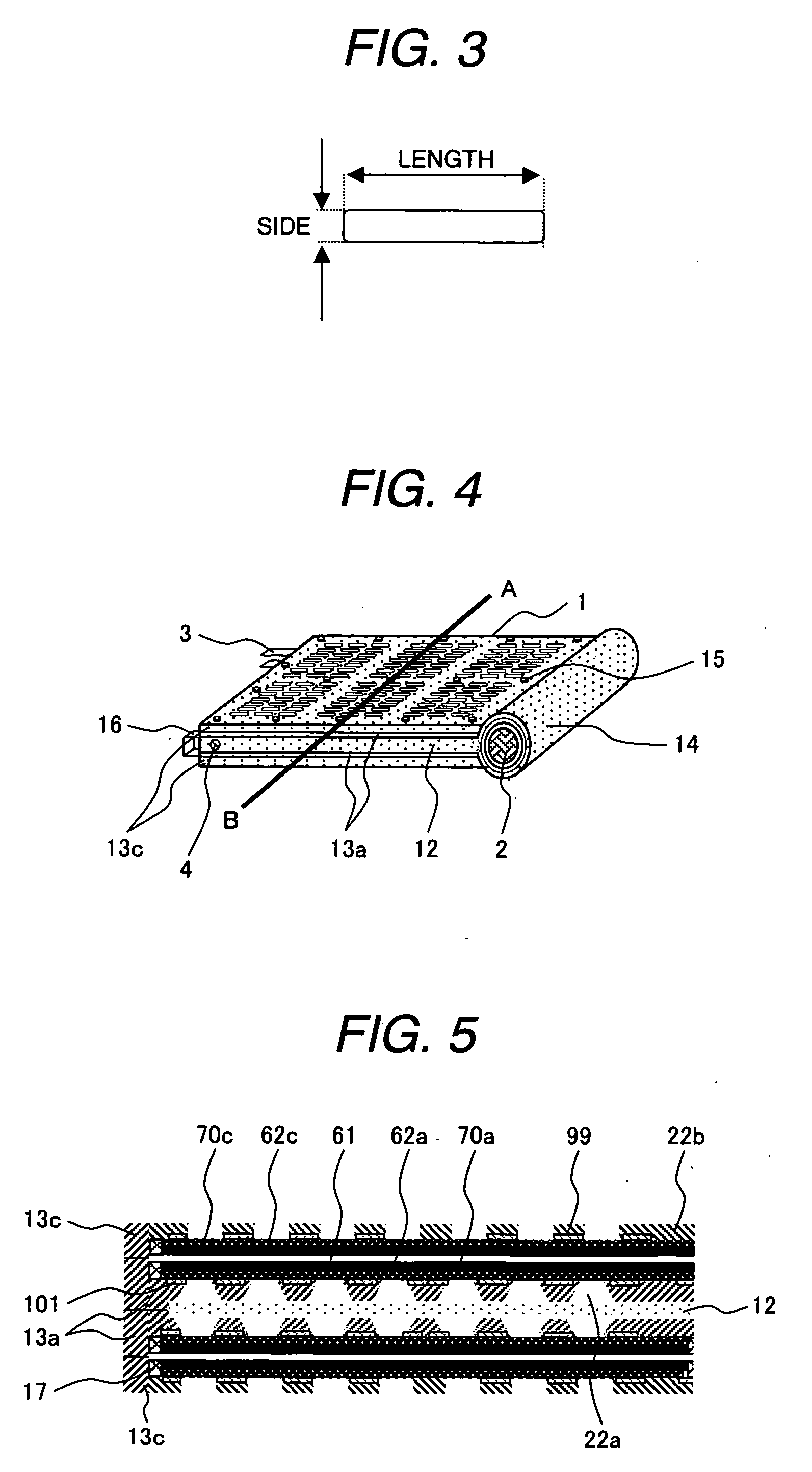Fuel cell, fuel cell power source system and electronic devices using the same
a technology of power source system and fuel cell, which is applied in the direction of fuel cell details, cell components, electrochemical generators, etc., can solve the problems of unsuitable cell for size reduction, many problems remain in continuous operation of mobile electronic devices for long hours, and require charging equipment and a relatively long charging tim
- Summary
- Abstract
- Description
- Claims
- Application Information
AI Technical Summary
Benefits of technology
Problems solved by technology
Method used
Image
Examples
example 1
(1) Synthesis of Chloromethylated Polyethersulfone
[0109] After a 500-ml four-necked round-bottom flask equipped with a stirrer, a thermometer, and a reflux condenser having a calcium chloride tube connected thereto was purged with nitrogen, 30 g of polyethersulfone (PES) and 250 ml of tetrachloroethane were charged in the flask, followed by the addition of 40 ml of chloromethyl methyl ether. A mixed solution of 1 ml of anhydrous tin chloride (IV) and 20 ml of tetrachloroethane was added dropwise. The reaction mixture was heated to 80° C. and stirred under heating for 90 minutes. The reaction mixture was charged in 1 liter of methanol to precipitate the corresponding polymer. The polymer thus precipitated was pulverized in a mixer and washed with methanol to yield chloromethylated polyethersulfone. The nuclear magnetic resonance spectrum of it revealed that the introduction ratio of a chloromethyl group {a ratio of a structural unit having a chloromethyl group introduced in it rela...
example 2
(1) Manufacture of Anode Endplate and Current Collector
[0133] Anode endplates and current collectors were manufactured by changing the short side / long side ratio of slits 122, 122a, 122b and 122c serving as transmission holes of fuel and carbon dioxide gas to 0.2, 0.36, 0.5, 0.8 and 1.0. The anode endplate and current collector were bonded and integrated by an epoxy resin. In addition, anode endplates and current collectors were manufactured by changing angles between the surface of the anode electrode and slits 122, 122a, 122b and 122c extending from the electrode toward the fuel tank to 90°, 85°, 80° and 70°, while fixing the short side / long side ratio to 0.36. The anode endplates and current collectors were bonded and integrated by an epoxy resin.
(2) Measurement of Contact Angle
[0134] The anode endplates integrated with the current collectors manufactured above in (1) were immersed in a 20 wt. % aqueous methanol solution contained in a Teflon (trade mark) vessel and the vess...
example 3
[0140] Anode endplates integrated with current collector subjected to UV / ozone treatment for 20 minutes, excimer laser treatment for 5 minutes, 10 minutes, 20 minutes or 30 minutes, or oxygen plasma treatment for 10 seconds were immersed in a 20 wt. % aqueous methanol solution contained in a Teflon (trade mark) vessel. The vessel was then put in an SUS pressure container. The pressure container was allowed to stand in a thermostat bath of 60° C. The anode endplates integrated with current collector were taken out after 2 days, 15 days and 60 days, respectively and wiped gently with “Kimwipe”. The contact angle with water was then measured using a contact angle meter “CA-D” (trade name) manufactured by Kyowa Interface Science. Results are shown in Tables 5 and 6. The anode endplates integrated with current collector subjected to UV / ozone treatment or oxygen plasma treatment had a contact angle of from 17 to 19°, while the anode endplates integrated with current collector subjected to...
PUM
| Property | Measurement | Unit |
|---|---|---|
| Temperature | aaaaa | aaaaa |
| Temperature | aaaaa | aaaaa |
| Temperature | aaaaa | aaaaa |
Abstract
Description
Claims
Application Information
 Login to View More
Login to View More - R&D
- Intellectual Property
- Life Sciences
- Materials
- Tech Scout
- Unparalleled Data Quality
- Higher Quality Content
- 60% Fewer Hallucinations
Browse by: Latest US Patents, China's latest patents, Technical Efficacy Thesaurus, Application Domain, Technology Topic, Popular Technical Reports.
© 2025 PatSnap. All rights reserved.Legal|Privacy policy|Modern Slavery Act Transparency Statement|Sitemap|About US| Contact US: help@patsnap.com



